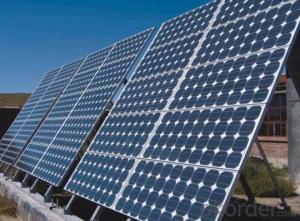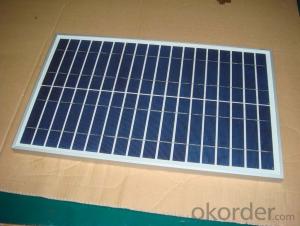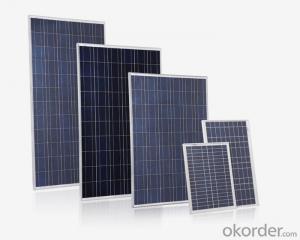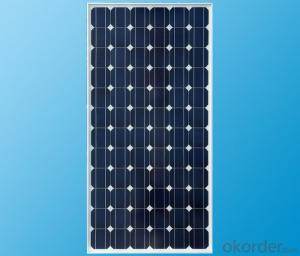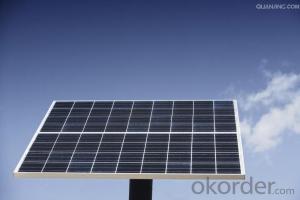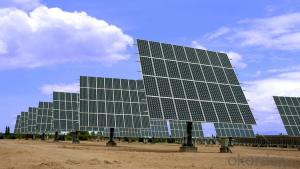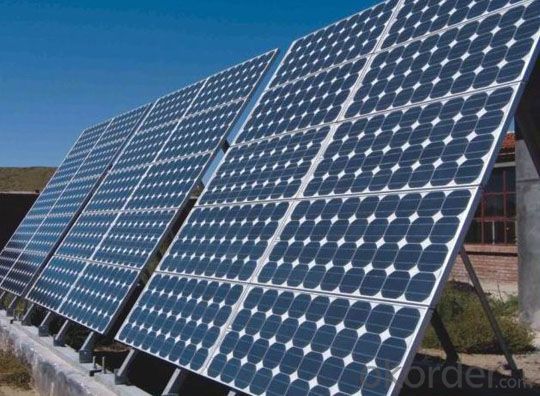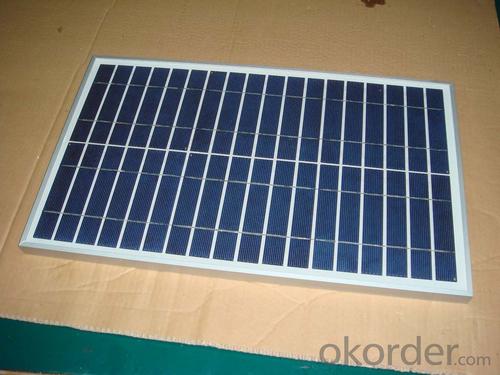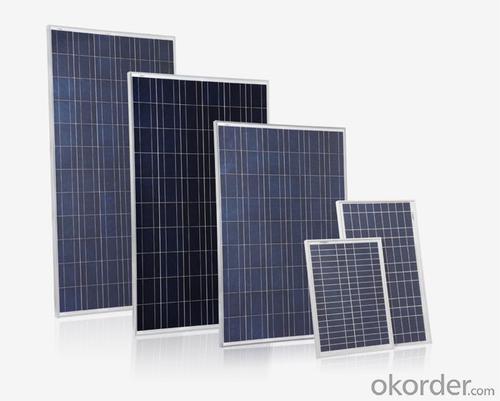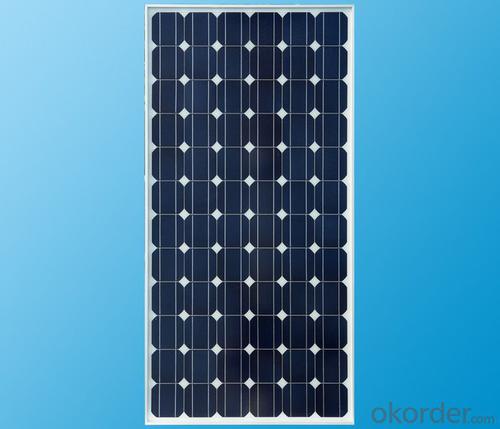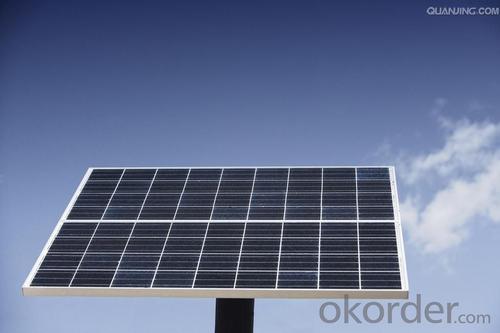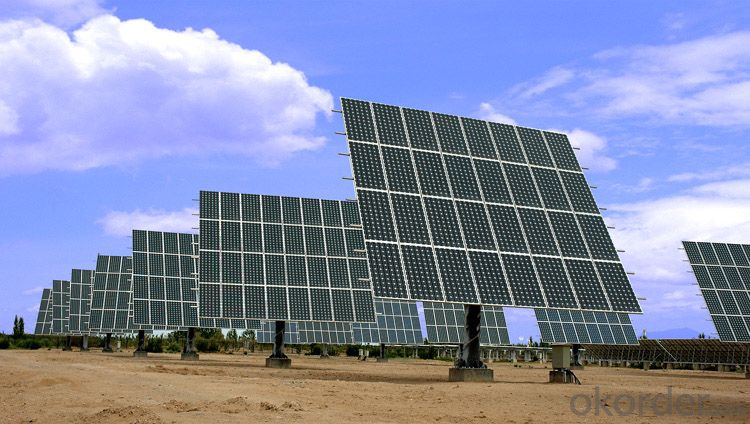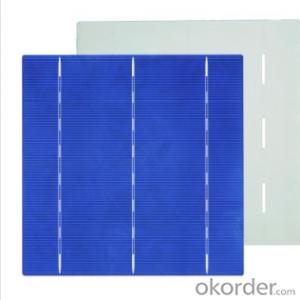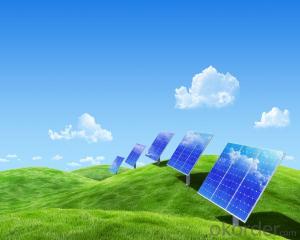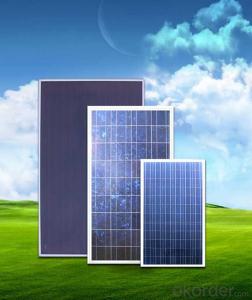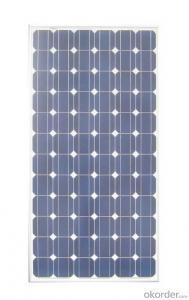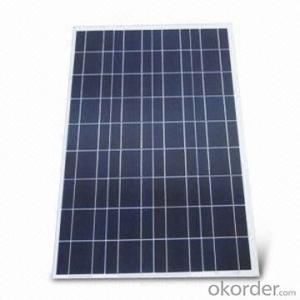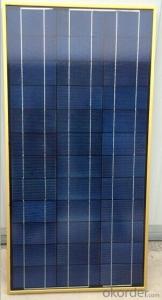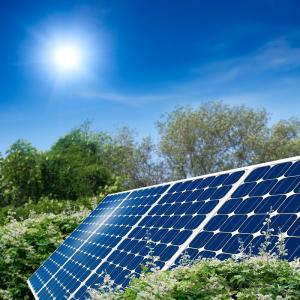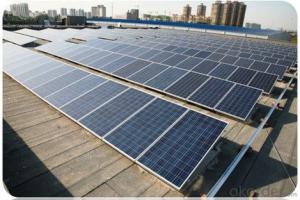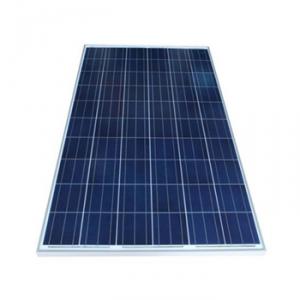3x6 Solar Cells Favorites Compare 140W 150W 260W Polycrystalline Solar Panel - Polycrystalline Silicon Solar Panel for Building Automation System
- Loading Port:
- China Main Port
- Payment Terms:
- TT OR LC
- Min Order Qty:
- -
- Supply Capability:
- 10000000000000 watt/month
OKorder Service Pledge
OKorder Financial Service
You Might Also Like
Quick Details
| Place of Origin: | Guangdong China (Mainland) | Brand Name: | CAP | Model Number: | 50w100w150w200w250w300w |
| Material: | Monocrystalline Silicon | Size: | 1385*1035*75mm | Number of Cells: | 72pcs |
| Max. Power: | 300w | type: | solar panel | color: | blue&black |
| warranty: | 5 years |
Packaging & Delivery
| Packaging Detail: | standard export package for solar panel |
| Delivery Detail: | 7-15 days for solar panel |
Specifications
solar panel
High Efficiency
25 years Warranty
High-transmissivity low-iron tempered glass
Solar Panel
50w100w150w200w250w300w
Characteristics
1,High and stable conversion efficienly based on over 4 years professional experience
2 ,High reliability with guaranteed +/-10% output power tolerance
3,Proven materials,tempered front glass,and a sturdy anodized aluminum frame allow modules to operate reliably in multiple mountily configurations
4,Combination of high efficicncy and attractive appearance
Quality and Safety
1,25 year 80%,10 year 90% power warranty 3 year power warranty
2,ISO9001:2000 (Quality Management system) certified factory
3,Product Quality warranty & products Liability Insurance to guarantee and user' benefits
4,Certifications TUV Intercert, CE Temperature Coefficients
| Module Type | 100w | 150w | 200w | 250w | 300w |
| Maximum Power at ST(Pmax)W | 100wp | 150wp | 200wp | 250wp | 300wp |
| Maximum Power Voltage(Vmp)V | 36/18 | 36/18 | 36/18 | 30.8v | 36/18 |
| Maximum Power Current(Imp)A | 2.77/5.55 | 4.16/8.33 | 5.55/11.1 | 8.11A | 8.33/16.66 |
| Open Circuit Voltage(Voc)V | 39.5/19.05 | 39.3/19.4 | 39.6/19.5 | 36.2V | 39.6/19.8 |
| Short Circuit Current(Isc)A | 3.04/6.09 | 4.58/9.16 | 6.1/12.2 | 8.7A | 9.16/18.33 |
| Cell Efficiency(%) | 18.60% | 18.10% | 18.60% | 17.80% | 18.10% |
| Module Efficiency(%) | 17.70% | 17.20% | 17.70% | 17.10% | 17.20% |
| Operating Temperature°C | -40°C to +85°C | -40°C to +85°C | -40°C to +85°C | -40°C to +85°C | -40°C to +85°C |
| Maximum system voltage | 1000V(IEC)DC | 1000V(IEC)DC | 1000V(IEC)DC | 1000V(IEC)DC | 1000V(IEC)DC |
| Power tolerance | -0.03 | -0.03 | -0.03 | -0.03 | -0.03 |
| Temperature coefficients of Pmax | -0.45%/°C | -0.45%/°C | -0.45%/°C | -0.45%/°C | -0.45%/°C |
| Temperature coefficients of Voc | -0.27%/°C | -0.27%/°C | -0.27%/°C | -0.27%/°C | -0.27%/°C |
| Temperature coefficients of Isc | 0.05%/°C | 0.05%/°C | 0.05%/°C | 0.05%/°C | 0.05%/°C |
| Weight(kg) | 8 | 11 | 14 | 20 | 25.5 |
| Number of cell(pcs) | 4*9 | 4*9 | 6*10 | 6*12 | 6*12 |
| Dimensions(mm) | 1194*534*35/30 | 1580*808*50/35 | 1471*670*40/35 | 1640*992*50 | 2000*1050*50 |
- Q: What is the role of solar cells in powering remote surveillance systems?
- Solar cells play a crucial role in powering remote surveillance systems by harnessing the sun's energy and converting it into electricity. This renewable energy source allows surveillance systems to operate in remote locations without relying on traditional power grids or expensive fuel sources. Solar cells provide a sustainable and reliable power supply, ensuring continuous operation of surveillance equipment, including cameras, sensors, and communication devices, even in areas without access to electricity.
- Q: What is the cost of producing a solar cell?
- The cost of producing a solar cell can vary depending on various factors such as the type and quality of materials used, manufacturing processes, scale of production, and market conditions. However, advancements in technology and economies of scale have significantly reduced the cost of solar cell production over the years. On average, the cost of producing a solar cell can range from a few cents to a few dollars per watt.
- Q: Are solar cells affected by electromagnetic interference?
- Yes, solar cells can be affected by electromagnetic interference. Electromagnetic interference can degrade the performance of solar cells by disrupting the flow of electrons and causing fluctuations in output power. However, proper shielding and grounding techniques can be implemented to minimize these effects and ensure optimal functioning of solar cells.
- Q: What is the lifespan of a solar cell?
- The lifespan of a solar cell varies depending on several factors such as the quality of materials used, manufacturer specifications, and environmental conditions. However, on average, most solar cells have a lifespan of around 25 to 30 years.
- Q: I know that solar cells are produced by DC and then converted into alternating current through the inverter, who explains why the solar cell is produced by DC?
- The electrons flow from the p region to the n region, and the current is formed after the circuit is turned on. This is the photoelectric effect of the working principle of solar cells. In the PN junction in the direction of electronic movement is fixed, is irreversible, so the resulting DC
- Q: Can solar cells be used for powering hospitals?
- Yes, solar cells can be used for powering hospitals. Solar energy can be harnessed through solar panels, which convert sunlight into electricity. Hospitals can install solar panels on their rooftops or in nearby areas to generate clean and renewable energy. This can help reduce their dependence on traditional electricity sources, lower energy costs, and ensure a more sustainable and reliable power supply, especially in areas with frequent power outages or limited access to electricity grids. Additionally, solar power can also be used to charge backup batteries, providing a continuous power supply during emergencies or when there is a shortage of sunlight.
- Q: Can solar cells be used for refrigeration?
- Yes, solar cells can be used for refrigeration through the use of photovoltaic (PV) systems. These systems convert sunlight into electricity, which can then power refrigeration units. This allows for the generation of cold temperatures and preservation of perishable goods, making solar cells a viable option for refrigeration in areas without access to traditional power grids.
- Q: What is the impact of solar cell installations on property values?
- Solar cell installations generally have a positive impact on property values. Studies have shown that homes equipped with solar panels tend to sell for higher prices and at faster rates compared to homes without solar. The cost-saving benefits of solar energy, such as reduced electricity bills, attract potential buyers and increase the desirability of the property. Additionally, the environmental benefits associated with solar power contribute to the positive perception of the home, further boosting its value.
- Q: How do solar cells perform in areas with high levels of snowfall?
- Solar cells typically do not perform optimally in areas with high levels of snowfall. The accumulation of snow on the surface of solar panels obstructs sunlight from reaching the cells, reducing their efficiency. However, advancements in technology and the tilt angle of solar panels can help minimize this issue by allowing the snow to slide off more easily. Additionally, regular maintenance practices such as clearing the snow can help ensure better performance during snowy periods.
- Q: How do solar cells perform in different geographic locations?
- Solar cells perform differently in different geographic locations due to variations in sunlight intensity and duration. Generally, solar cells perform better in regions closer to the equator with higher solar irradiance. However, solar cells can still generate electricity in less sunny locations, although their efficiency may be lower. Factors such as climate, cloud cover, pollution, and shading also impact solar cell performance. Additionally, the angle at which solar panels are installed can optimize energy production in specific geographic locations.
Send your message to us
3x6 Solar Cells Favorites Compare 140W 150W 260W Polycrystalline Solar Panel - Polycrystalline Silicon Solar Panel for Building Automation System
- Loading Port:
- China Main Port
- Payment Terms:
- TT OR LC
- Min Order Qty:
- -
- Supply Capability:
- 10000000000000 watt/month
OKorder Service Pledge
OKorder Financial Service
Similar products
Hot products
Hot Searches
Related keywords
